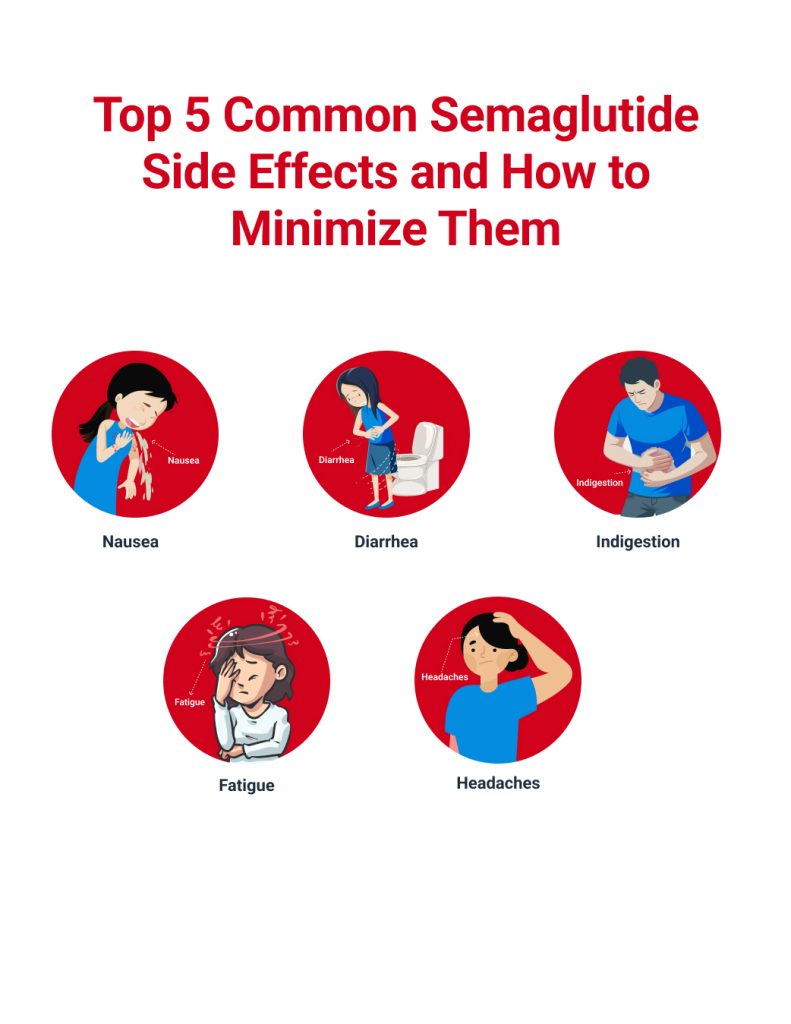Top 5 Common Semaglutide Side Effects and How to Minimize Them
You’ve tried a long list of different diets, all recommended by someone who was able to lose weight successfully while sticking to them. But when you stuck to them, nothing much happened. You also exercised–a lot (and maybe pulled a few muscles here and there in the name of health and fitness). Still, your results were slim to none.
So, what should you turn to next? If you haven’t had any luck with diet and exercise–no matter how many variations you’ve tried–you may want to start looking into semaglutide. You’ve heard of GLP-1 medications, but you’re hesitant to try them due to the side effects.
What are semaglutide’s five most commonly reported side effects, and how can you minimize them?
How Semaglutide Works
The thing about weight loss is that everyone’s journey is different. You might only drop a few pounds following the same program that helped someone you know lose a good forty or so pounds. But there’s no guarantee because your body chemistry is different. You might be missing a key ingredient–the thing that may help make your weight loss journey a success: semaglutide.
Semaglutide and GLP-1 medications mimic hormone receptor agonists known as glucagon-like peptide-1 agonists. When you eat a meal or reach for a snack during a work break, your body triggers GLP-1 receptors to balance your blood sugar levels and send signals to your brain that you’re eating and, therefore, satisfying your hunger cue.
By keeping your blood sugar under control and helping you experience fewer hunger cues, semaglutide may help you consume fewer calories as you develop good nutritional and exercise habits to help you get the most out of your semaglutide weight loss program.
5 Common Semaglutide Side Effects And How To Treat Them
At Allure Esthetic, our weight loss programs include a monthly follow-up appointment as well as 24/7 access to an on-call doctor. That way, if you do experience any side effects that you are concerned about or that are too uncomfortable to handle, you can quickly get in touch with a provider for medical advice.
Some of the most common side effects that patients may report with semaglutide use include:
- Nausea: If you experience a queasy stomach that starts interfering with your daily life, you should reach out to your provider. Some at-home remedies for mild nausea are drinking mint tea (like peppermint) or sipping ginger ale. Your provider can recommend other solutions if necessary.
- Diarrhea: The one thing people tend to forget about having diarrhea is how easily you can get dehydrated, especially if you don’t drink as much water as you should on a daily basis. Fill up a reusable water bottle and take plenty of drinks to keep your body hydrated until this side effect passes. And maybe stick to bland foods for the time being.
- Indigestion: While relief from indigestion is usually just a few antacids away, you’ll need to check with your healthcare provider first to make sure you can safely take an over-the-counter antacid while you’re on prescription medication (including semaglutide).
- Fatigue: This can be a frustrating side effect, especially if you are an always-on-the-go type of person–or if your busy schedule has made you into one. Try to slow down a bit if you’re feeling tired from semaglutide. It should diminish as your body adjusts. In the meantime, rest when you can and drink plenty of water to relieve some of the sluggish feeling.
- Headache: In fact, drinking more water may help with most semaglutide side effects (aside from nausea). For bothersome headaches, ask your provider what over-the-counter pain medications you can take to relieve the pain.
Minimize Semaglutide Side Effects
At Allure Esthetic, our weight loss programs focus on making sure you get excellent care and support during your journey to a healthy weight. Call or text us today for more information at (206) 209-0988 or book your consultation online.
 FeminizationSurgeries.com
FeminizationSurgeries.com

